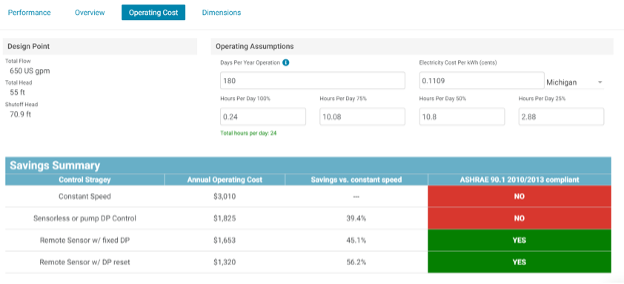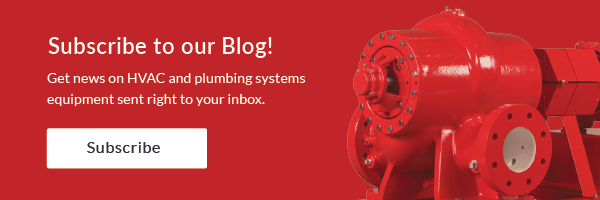 We recently received an inquiry from an engineering firm deciding whether to change their pump schedule. They currently select the pumps at design capacity and show the trimmed impeller at full motor speed. They are wondering if a note on the schedule should read, “Pumps designed to operate as variable speed shall be provided with maximum impeller diameter that is non-overloading over the entire curve for the scheduled motor horsepower.”
We recently received an inquiry from an engineering firm deciding whether to change their pump schedule. They currently select the pumps at design capacity and show the trimmed impeller at full motor speed. They are wondering if a note on the schedule should read, “Pumps designed to operate as variable speed shall be provided with maximum impeller diameter that is non-overloading over the entire curve for the scheduled motor horsepower.”
A couple of years ago, we published the R. L. Deppmann Company Monday Morning Minutes titled, “HVAC Hydronic Pumps – Should I Trim the Impeller or Trim with Speed”? It is always easier to read an article than make changes in your procedures to incorporate the ideas.
The engineer called because they specified one impeller size and we submit a larger one in almost all the variable speed pump submittals. They wanted to know if a note would help.
Why Use the Maximum Impeller for the HP?
You may want to read the two-article set mentioned above but here is a quick example. Let us assume we have a requirement of 650 GPM of water at 55 feet of head. We can use the Bell & Gossett esp-Systemwize pump selection program to compare two selections.
If we use the “old” method, we select using a constant speed curve. Here is the curve we see.

The exact operating point will be 650 GPM at 55 feet with a brake horsepower of 11 at 1770 RPM full motor speed. The operating point efficiency is 84.7% and a 8.625” impeller is required.
If we select the “variable speed” control option, the pump remains the same, but the impeller and curve changes as follows:

The impeller now becomes 9.25”. The operating point will be 650 GPM at 55 feet with a brake horsepower of 10.6 at 1606 RPM. The operating point efficiency is 85.3%.
We gained over ½% efficiency for no cost.
Operating Cost Savings using a 9.25” Impeller at 1606 RPM
The following is the operating cost for this pump as shown in the program. The hours and load used is the B&G PLEV or Part Lod Efficiency Value.

Since the difference in efficiency in this example is less than 1%, the energy savings will also be less than 1%. There are energy savings, and the engineer still has the advantage of extra head and flow capacity if needed.
Should the Engineer Add the Note?
Selecting pumps this way will result in pump efficiency increases of ½% to 2%. Is it worth it? If someone told me I could get an increase in my gas mileage of 1% for no additional cost, I would jump at it. Why not provide your client the same with pumps?
Another advantage for the engineer is the potential safety factor. At full speed, the pump will be able to produce more flow and head. This is less of a factor since you could just overspeed the pump to get the same results at a lower efficiency.
We would recommend the engineer use:
- esp-Systemwize variable speed for selections.
- Schedule the maximum impeller as shown in the selection.
- Add a column for “pump speed at design” while keeping the motor speed column. This will help the balance technician or service contractor in the future.
- Add the note mentioned at the start of this article.
The owner will benefit from higher efficiency and the submittals will match the Pump Schedule making it easy for the office personnel to review.

